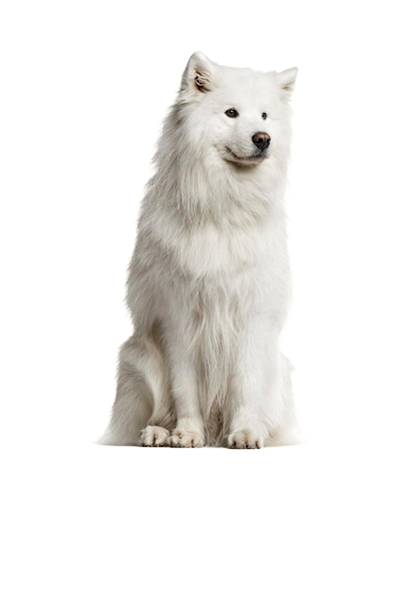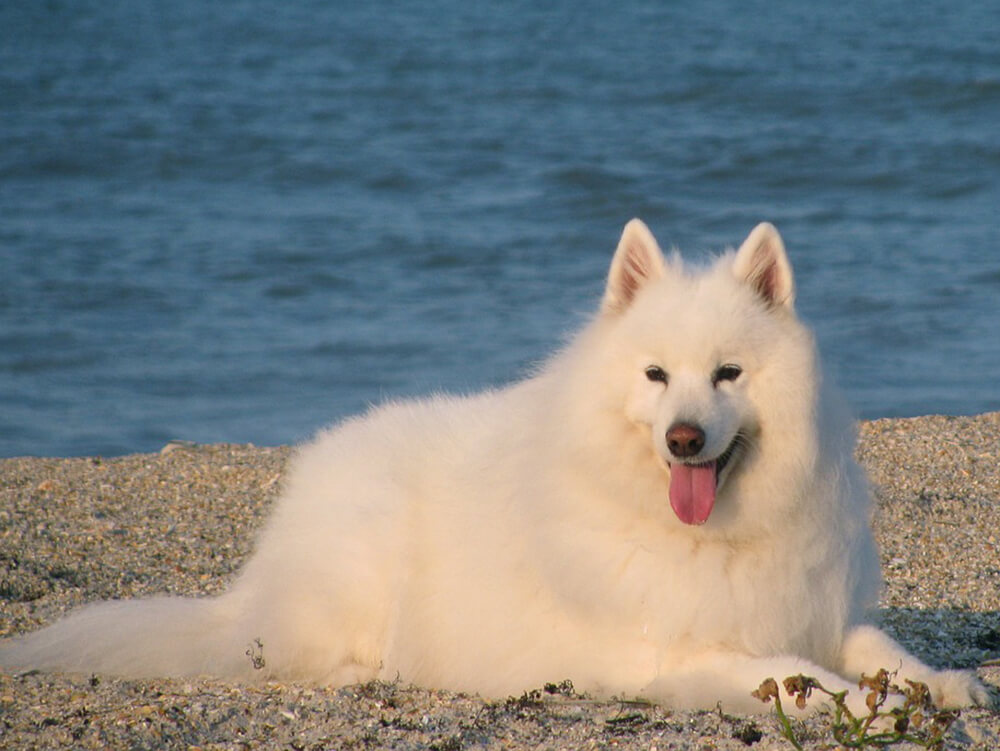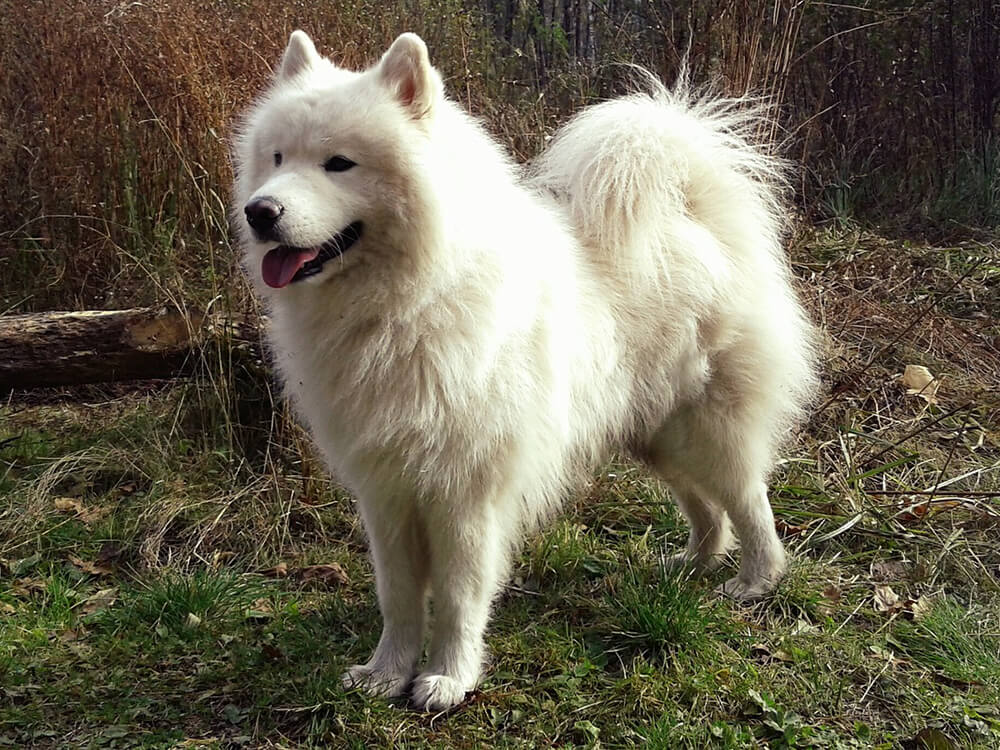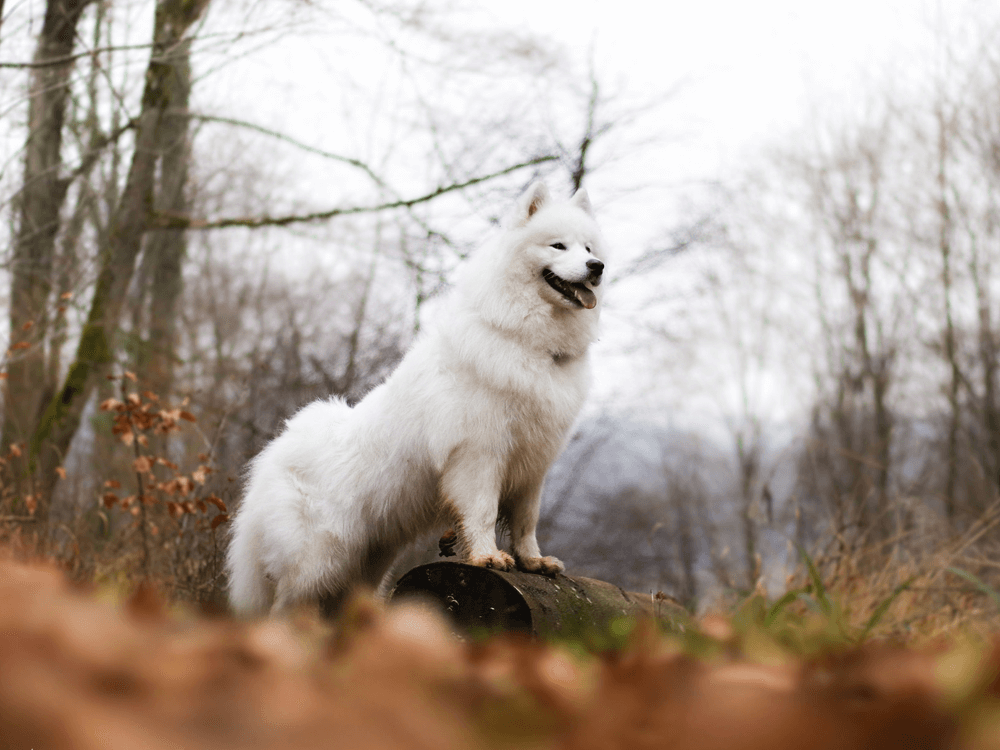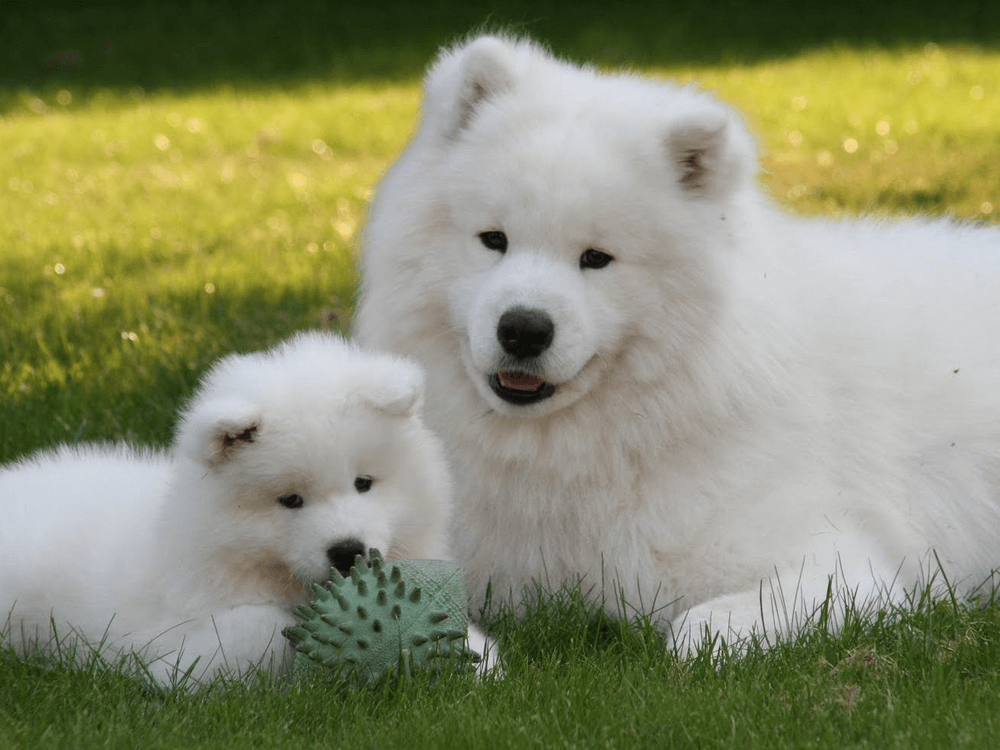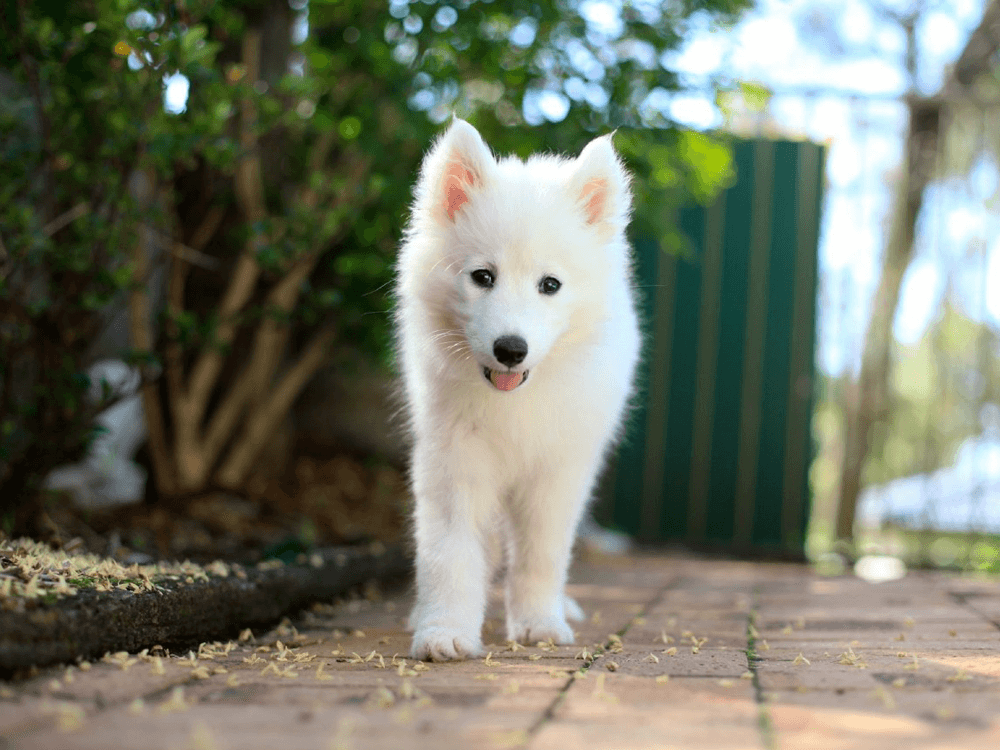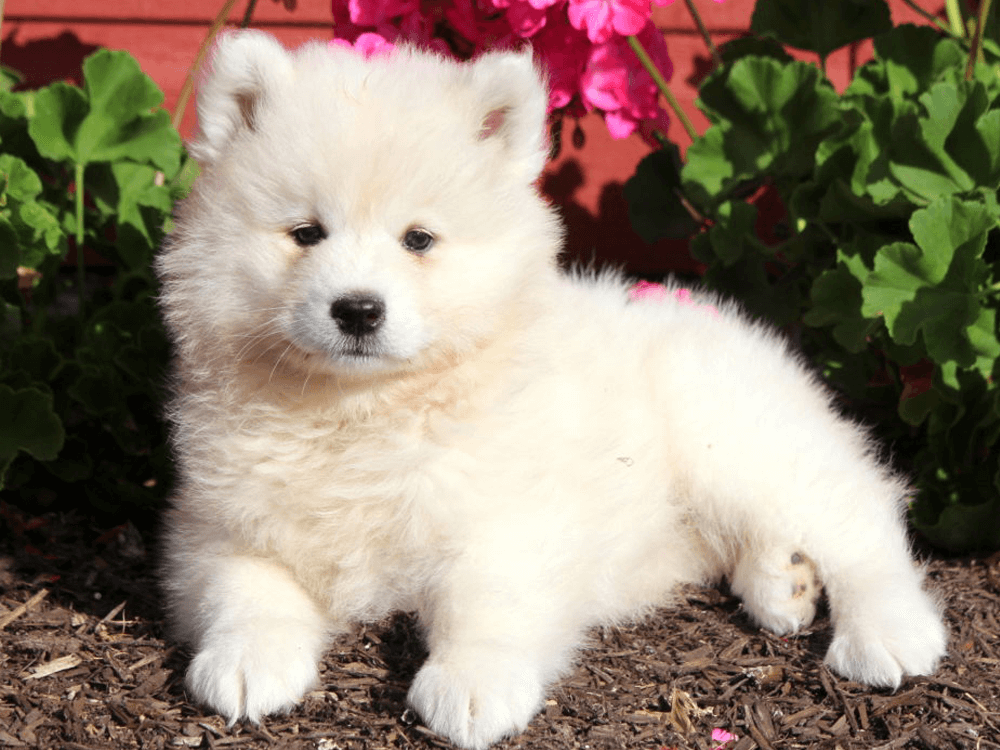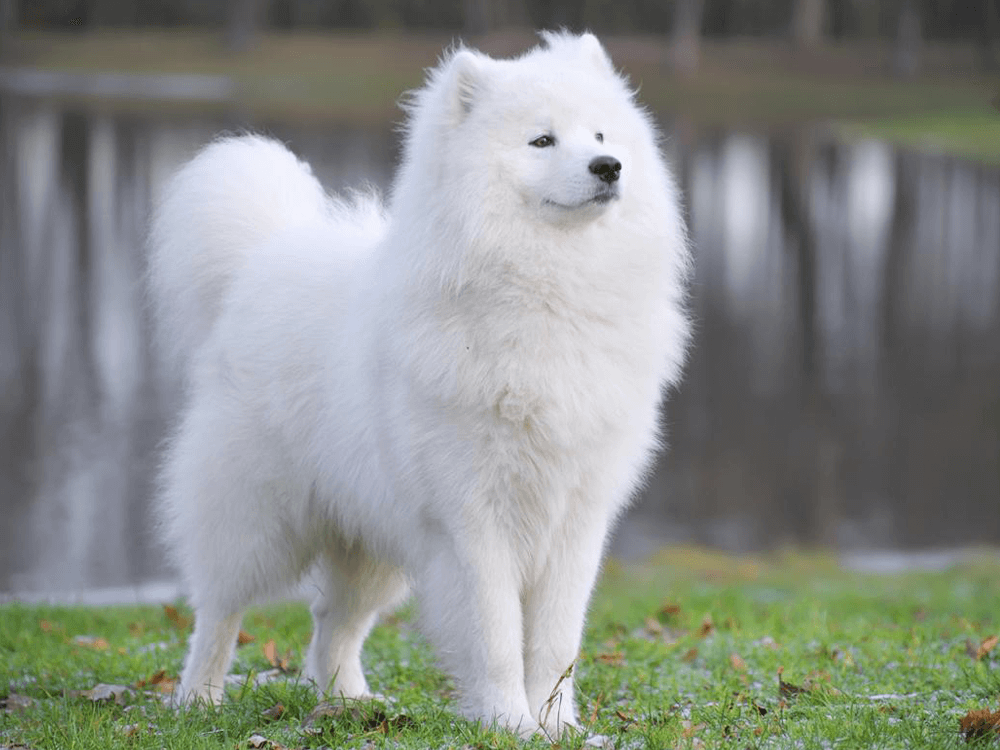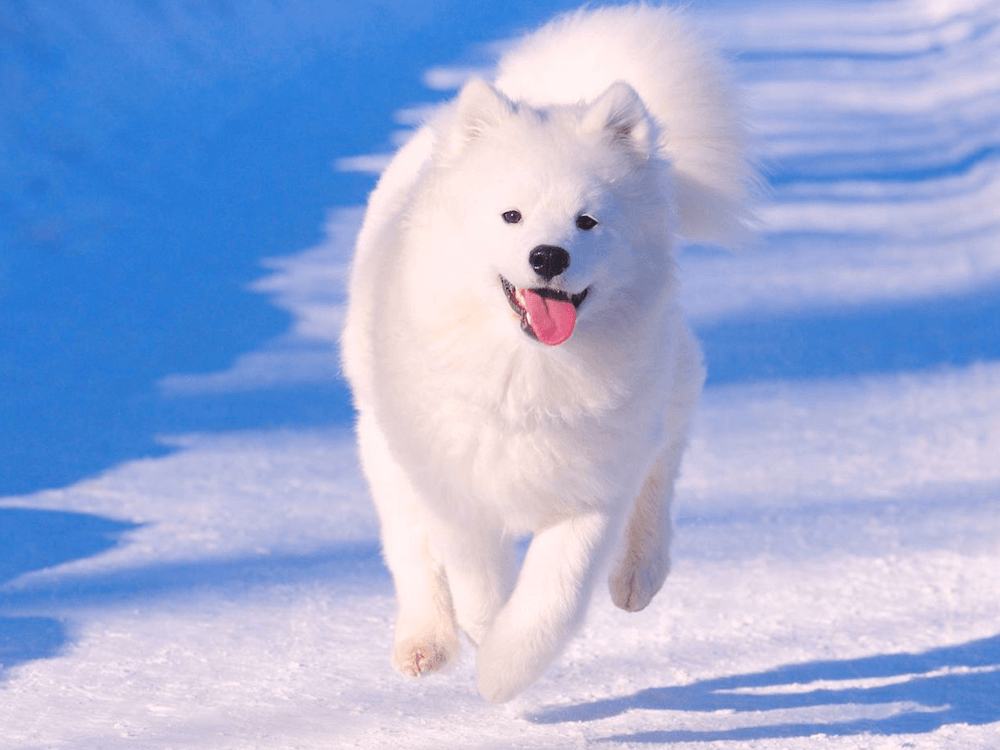
Samoyed Breed Pictures
Vital Breed Stats
| Height: | 53 - 60 cm M | 48 - 53 cm F |
| Weight: | 21 - 30 kg M | 16 - 21 kg F |
| Breed Group: | Hound Dog Group |
| Life Expectancy: | 11 - 14 years |
| KC Registered: | No |
Breed Characteristics
| Size: |  |
| Grooming: |  |
| Exercise Level: |  |
| Trainability: |  |
| Barking Level: |  |
| Good with Children: |  |
| Good with other pets: |  |
| Affectionate: |  |
| Protective: |  |
| Cost to Keep: |  |
Give a thumbs up if you love the Samoyed

0
More About the Breed
History
The Samoyed is one of the ancient breeds that descended from a spitz-type dog from Siberia – the Nenets herding laika – bred for herding, guarding and pulling sleds. The breed is called Bjelkier in native Siberia, but are referred as Samoyed today after the Asiatic nomadic tribes, Samoyede.
It is believed that the Samoyed was mainly utilised as a sled dog for polar expeditions. The Samoyed was first noticed by Russian explorers when they passed through Siberia during the 17th and 18th century. The magnificence of the breed was then recognised and not long after the Czar of Russia took particular interest to the dog breed. He even awarded the dog a royal status and offered the Bjelkiers to European nobles as gifts.
In 1911, the Bjelkiers found their way to England when explorer Roald Amundsen used the breed on his South Pole expedition and offered some Bjelkiers to other South Pole explorers from England. In 1909, the first Samoyed Club was established. By 1912, the Samoyed was given its own class status and recognised by The Kennel Club.
Appearance
The Samoyed weigh 50 to 60 pounds and stand 46 to 56 centimetres. It is a strong, alert and lithe dog breed that always carries itself with dignity and elegance. The Samoyed has a wedge-shaped head, moderately long muzzle that tapers toward the nose, and black lips that curve upward, giving the appearance of a smile. Its nose can be black, brown or flesh-coloured, while its almond-shaped eyes can be medium to dark brown. The ears are triangular-shaped set apart on the Samoyed’s head.
The breed’s muscular body is built to withstand harsh weather, which is covered in thick hair. The Samoyed wears a double coat comprised of an undercoat that is thick and woolly and a topcoat made of harsh longer hair. The coat can be pure white, cream, white and biscuit or all biscuit colours.
Grooming
The Samoyed sheds heavily, and its double coat is difficult to groom. The coat needs to be brushed daily when it’s heavily shedding and once or twice a week when it’s not. Some owners will even hire a professional groomer.
As part of basic dog grooming, check the Samoyed’s ears on a weekly basis and watch out for signs of infection or wax build up. Use a veterinarian-approved cleanser to clean the ears. The teeth must be brushed at least once a week so minimise tartar and prevent gum disease. Trim the nails once a month, if the dog does not wear it down naturally or when you start to hear clicking sounds.
Temperament
Intelligence
The Samoyed’s alert nature makes it a useful watchdog. This vocal dog never fails to bark to announce if someone is about. However, it should not be mistaken as a guard dog since it is quick to cosy up to strangers, demanding a belly rub. However, do not think this dog with an ever-present smile is the docile and obedient type. In fact, the Samoyed has a bit of a stubborn streak that makes it a little difficult to train, though it is generally well-behaved.
Since Samoyeds are friendly dogs, they are naturally great with children. However, it is best always to supervise any interaction in case things become a bit rowdy so a child doesn’t get hurt. Samoyeds get on well with other dogs including cats they grow up with. However, they will happily chase any small animals, so care should be taken.
Nutrition
- Senior and less active: up to 1,160 calories daily
- Typical adults: up to 1,310 calories daily
- Physically active/working dogs: up to 1,460 calories daily
Feeding
Health
Exercise
Cost of Ownership
No doubt owning a dog brings a lot of benefits. It is a fantastic companion that can help improve people’s mood and relieve stress. However, diving head on without knowing the actual cost to own and care for a dog can affect your finances significantly, which may cause the opposite effect to people’s well-being (e.g. grief if forced to give up the dog or stress to keep up with the bills). So while, you are still contemplating whether to buy a Samoyed puppy, bear in mind the following expenses:
- Samoyed puppy price (one-time) – £500 to £1,000
- Pet insurance (monthly) – £22 (basic cover) to £51 (lifetime cover)
- Dog food (monthly) – £40 to £50
- Veterinary care (yearly) – £1,000
- Dog supplies (one-time) – £200
Samoyed Breed Highlights
- The Samoyed is a gentle, cheerful and outgoing dog breed from the pastoral
- It is an alert and lithe dog breed that always carries itself with dignity and elegance.
- It sheds heavily, and its double coat is difficult to groom.
- Samoyeds’ alert nature makes them useful watchdogs, but not guard dogs.
- They have a stubborn streak and are a little difficult to train.
